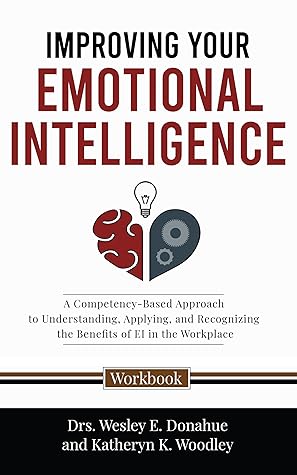Kindle Notes & Highlights
Started reading
June 29, 2025
We define a competency as a set of skills, knowledge, attitudes, and behaviors that are observable and measurable.
The emphasis here is on observable and measurable.
of Self-Responsibility and Management, Interpersonal Skills,
Interpersonal Relationship Building.
As with most things in life, you will get out of this workbook only what you put into it. To learn and grow you must engage fully with the material presented.
workbook. Do the activities and answer the questions in each concept?
notes. Look for ideas new to you and consider how they fit with yo...
This highlight has been truncated due to consecutive passage length restrictions.
intelligence, abbreviated as EI or EQ, may account for 58% of your success in life,
enough to recognize their emotional state (Van Camp, 2015). And, in another study examining how emotional intelligence and IQ affect
of people in the workplace?
One of the main challenges we've experienced related to emotions in the workplace is managing stress and emotional reactions during high-pressure situations, especially when deadlines are tight or unexpected changes occur.
For example, in project-based environments, team members sometimes become frustrated or anxious when tasks are unclear or when communication is poor. This can lead to conflict, reduced collaboration, or even a drop in motivation.
Another emotional challenge is resistance to feedback. Some employees may take constructive criticism personally, which can hurt trust and communication within the team.
To address these challenges, we’ve learned the importance of emotional intelligence. We've encouraged open communication, active listening, and regular team check-ins. We also try to create a culture where emotions are acknowledged and managed in a respectful and professional way.
Daniel Goleman has defined emotion as follows: “I take emotion to refer to a feeling and its distinctive thoughts, psychological and biological states, and range of propensities to act” (Goleman, 1995 p 189). Emotion, cognition and behavior— feeling, thinking and acting-influence each other. Each emotion can affect, among other things, our level of physiological arousal, our motor responses, and how we interact with others. For example, common responses to sadness include crying and withdrawal from others, and responses to anger include reddening of the face and verbally or physically
...more
وقد عرّف دانيال جولمان العاطفة على النحو التالي: "أعتبر العاطفة إشارة إلى شعور وأفكاره المميزة، وحالاته النفسية والبيولوجية، ونطاق ميوله للتصرف" (جولمان، 1995، ص 189). تؤثر العاطفة والإدراك والسلوك - الشعور والتفكير والتصرف - على بعضها البعض. يمكن أن تؤثر كل عاطفة، من بين أمور أخرى، على مستوى إثارتنا الفسيولوجية، واستجاباتنا الحركية، وكيفية تفاعلنا مع الآخرين. على سبيل المثال، تشمل الاستجابات الشائعة للحزن البكاء والانسحاب من الآخرين، وتشمل الاستجابات للغضب احمرار الوجه والسلوك العدواني لفظيًا أو جسديًا.


